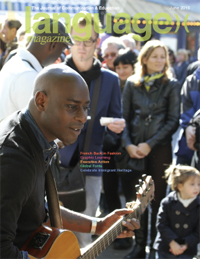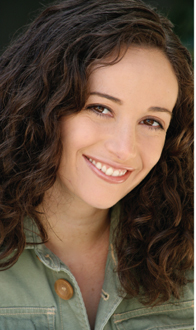 The Miami-Dade School district in Florida is postponing a scheduled change in the methodology of teaching foreign languages, namely Spanish. Superintendent Alberto Carvalho’s original plan was to eliminate all traditional 30-minute-a-day Spanish classes and replace them with language immersion programs. However, both parents and teachers voiced concern. Rosa Castra Feinberg, who became the first Hispanic woman elected to the Miami-Dade School Board in 1988, called the plan “exclusionary” and “elitist.”
The Miami-Dade School district in Florida is postponing a scheduled change in the methodology of teaching foreign languages, namely Spanish. Superintendent Alberto Carvalho’s original plan was to eliminate all traditional 30-minute-a-day Spanish classes and replace them with language immersion programs. However, both parents and teachers voiced concern. Rosa Castra Feinberg, who became the first Hispanic woman elected to the Miami-Dade School Board in 1988, called the plan “exclusionary” and “elitist.”
Spanish Prevails in Miami Schools
China’s Demand for Spanish Skyrocketing
 Lu Jingsheng, the Chinese government’s National Coordinator for Spanish, said that in the last fifteen years the demand for Spanish language education in China has “increased 30 fold” without being properly addressed. Job opportunities for Spanish language speakers are growing in China, but without sufficient educational support, resulting in a high demand for teachers. “Spanish speakers in China have a good systematic infrastructure, but strong pedagogical work needs to be developed in order to harness the economic opportunities provided by China,” Lu said. “The amount of jobs for Spanish speakers is constantly growing, especially for teachers. China is a challenge, but also a great business opportunity.”
Lu Jingsheng, the Chinese government’s National Coordinator for Spanish, said that in the last fifteen years the demand for Spanish language education in China has “increased 30 fold” without being properly addressed. Job opportunities for Spanish language speakers are growing in China, but without sufficient educational support, resulting in a high demand for teachers. “Spanish speakers in China have a good systematic infrastructure, but strong pedagogical work needs to be developed in order to harness the economic opportunities provided by China,” Lu said. “The amount of jobs for Spanish speakers is constantly growing, especially for teachers. China is a challenge, but also a great business opportunity.”
June 2015

Profile: Mohamed Abdel-Kader
The U.S. Department of Education’s language boss shares his motivation and goals
Words + Pictures
Lina Sun sees the value of using graphic novels to help develop multiliteracies
French à la mode
Gaétan Mathieu sees bilingualism as the key to the future of French in the U.S.
Destination France
Where and why to learn French in France
Quebec Beckons
From language to La Citadelle, explore Canada’s largest province
Designing Global Fonts
Mourad Boutros interviews Peter Rosenfeld, whose 35 years’ experience in type has helped us read the same way in different scripts
Celebrating Immigrant Heritage
Books to Read to your Child this Father’s Day
Last Writes Richard Lederer on the word no one wants to admit is a word
Information Inequality and the Languages of the Internet
 The Guardian recently published an interactive guide by Holly Young, editor of the Case for Language Learning series on education, that details how language barriers shape internet user experiences. English was the first language used online and by the mid 1990’s made up 80% of web-based content. Now 80% of the internet is dominated by ten languages: English, Chinese, Spanish, Arabic, Portuguese, Japanese, Russian, German, French, and Malaysian. Out of the world’s approximately 6,000 languages, only about 130 are online. This means that the remaining 20% of internet content is reflective of 120 languages. Daniel Prado, a researcher on linguistic diversity, noted in 2012, “The famous engine [Google] that recognizes 30 European languages recognizes only one African language and no indigenous American or Pacific languages.” This information inequality online has implications for who and what gets represented. Mark Graham, from the Oxford Internet Institute, said, “Rich countries largely get to define themselves and poor countries largely get defined by others.”
The Guardian recently published an interactive guide by Holly Young, editor of the Case for Language Learning series on education, that details how language barriers shape internet user experiences. English was the first language used online and by the mid 1990’s made up 80% of web-based content. Now 80% of the internet is dominated by ten languages: English, Chinese, Spanish, Arabic, Portuguese, Japanese, Russian, German, French, and Malaysian. Out of the world’s approximately 6,000 languages, only about 130 are online. This means that the remaining 20% of internet content is reflective of 120 languages. Daniel Prado, a researcher on linguistic diversity, noted in 2012, “The famous engine [Google] that recognizes 30 European languages recognizes only one African language and no indigenous American or Pacific languages.” This information inequality online has implications for who and what gets represented. Mark Graham, from the Oxford Internet Institute, said, “Rich countries largely get to define themselves and poor countries largely get defined by others.”
Immigrant Heritage Month
 Language Magazine is proud to support the 2nd Annual Immigrant Heritage Month Joining Nationwide Effort to Highlight Immigrant Impact on History and Future of America
Language Magazine is proud to support the 2nd Annual Immigrant Heritage Month Joining Nationwide Effort to Highlight Immigrant Impact on History and Future of America
Language Magazine has announced its support of the second-annual Immigrant Heritage Month, an initiative to partner community organizations, elected officials, corporations, artists, and thought leaders to gather and share inspirational stories of American immigrants. “Immigrants, their cultures, languages, and skills are America’s greatest resource,” claims Language Magazine editor Daniel Ward. “In our age of globalization, we have to recognize the value of our multicultural, multinational roots and ensure that immigrants, old and new, retain and share the skills, customs, and knowledge that they brought to this country so that all Americans can have a better understanding of the global village in which we live.”
Language Magazine is inviting its readers and followers to share their own immigration stories, publicize their heritage culture and language programs, and announce events through our network. Visit our story submission page for details on how to submit information.
Let’s celebrate our immigrant heritage!
Visit www.welcome.us for more information. Welcome.us, a non-profit organization, is dedicated to celebrating a United States that is fueled by immigrants from around the world. Immigrant Heritage Month honors the ways in which America and the immigrants who have built our country are linked in a shared, productive history.
The Wizardry of Oz
Clever schemes, vibrant cities, and stunning landscapes make Australia a great bet for students
Australia has been a preferred study-abroad destination for students from the U.S. and Asia for decades because of the excellent quality of the universities, unique flora and fauna, charming culture, jaw-dropping coastlines, hip cities, and, of course, English language. In recent years, international students have been flocking to the Land Down Under for all of the same reasons. Unlike the Americans, however, many international students see English in Australia as an opportunity to learn the language; some go to Australia just for the English language education, while others transfer into Australian universities for college or graduate school.
Putin’s Language Policy
 While France’s Minister of Culture decided that fighting the inclusion of foreign words was hurting, rather than preserving, the French language, Russia remains resistant. President Vladimir Putin has launched a number of initiatives to preserve the “purity” of the Russian language, including declaring this year Russia’s Year of Literature. Putin told several dozen government officials, writers and education managers, who participated in a joint meeting of the Council for Interethnic Relations and the Council for Russian Language that the overall language environment “is now formed primarily by the media, the Internet and television, where language norms and elementary grammar rules are being ignored ever more frequently and linguistic borrowings from other languages are used excessively, often without any obvious need.”
While France’s Minister of Culture decided that fighting the inclusion of foreign words was hurting, rather than preserving, the French language, Russia remains resistant. President Vladimir Putin has launched a number of initiatives to preserve the “purity” of the Russian language, including declaring this year Russia’s Year of Literature. Putin told several dozen government officials, writers and education managers, who participated in a joint meeting of the Council for Interethnic Relations and the Council for Russian Language that the overall language environment “is now formed primarily by the media, the Internet and television, where language norms and elementary grammar rules are being ignored ever more frequently and linguistic borrowings from other languages are used excessively, often without any obvious need.”
All the School’s a Stage
Pilar Alvarez, education director at the Young Storytellers Foundation, explains how the organization boosts literary confidence
Language Magazine: What is the history and overall goal of the Young Storytellers Foundation?

Pilar Alvarez: The Young Storytellers Foundation was started in 1997 by a group of film students in response to budget cuts in LA public schools. The founders wanted to bring in a program that was absolutely free, something that any public school could have regardless of its funding, which is why they created our volunteer-based Script to Stage program, where we bring in ten adult mentors who work with ten fifth-grade students. Over ten weeks, each of those students will create their own screenplay. Screenwriting is the vehicle we use for building the soft skills that we think are important for literacy. Our program is about building academic and creative confidence and really just getting kids excited about writing. A really important thing for Young Storytellers is that the kids delegate the content. They are able to write about whatever they want to write about. Obviously we have some limitations, because we’re working with ten-year-olds and we’re in school, so we don’t want to have violence, but we actually pose that as more of a challenge. Young Storytellers believes in non-violent, creative solutions to problems.
LM: Can you tell us more about the Big Show?
PA: Every student gets to see their work performed by professional actors, and all of our young writers cast their actors. For the first hour, the actors, the mentors, and the writers will all play games. Then, the actors all get one to two minutes to audition for the kids. Usually the head mentors give the actors a heads-up as to what kinds of characters are in the screenplays so they can prepare for auditions, but our kids our insanely creative. I’ve been in a couple of Big Shows, and the last character I played was an animatronic chicken. A lot of actors who have done a couple of big shows will say, “Last time I was an angry grizzly bear,” or a “piece of trash that came to life.” The actors then perform pretty much on the spot. We don’t have props and we don’t have costumes, which is an opportunity for the kids to see actors with just their bodies use their imaginations to create everything in the screenplay. It also helps us not limit the kids and show them that you can have anything. You can have a spaceship going off into space. Don’t worry about creating that spaceship. The actors will do that. We like to use actors that can physically improvise, not the actual lines because we want to stay true to what’s been written by the kids, but someone who can make bold choices in a short amount of time.
LM: How many students do you typically have in one Script to Stage ten-week program, and is it always fifth graders, or do you do different grades?
PA: It’s almost always fifth graders, but sometimes we might have a couple of sixth graders or fourth graders. We do one session in the spring and one session in the fall, and each time we only work with ten students. We have the teachers select who participates, and we tell them that we want to work with kids who are normally not in the spotlight, who would benefit from a one-on-one experience. We have a set curriculum, but having that one-on-one mentor who can adjust what they’re doing based on the needs of the writer they’re working with is a really important component of the program. That means that sometimes we have students who are English language learners (ELLs), students on the autism spectrum, students who are not conventional learners, students who are struggling academically in English language arts, or maybe are just not interested or invested in English language arts because they’re not given an opportunity to write about what they want to write about. Sometimes it’s a lot of introverted and shy kids who need that one-on-one person to help build their confidence and structure their ideas.
LM: What is the Movie Makers program?
PA: Movie Makers is the middle school YSF program. Right now, it’s twelve middle school students who work in pairs to write screenplays and then make the movies of those screenplays. They do all of the preproduction, the planning, create the shot lists, the storyboards, and they direct professional actors. In Script to Stage, participants cast the actors but they don’t have time to give them direction. In Movie Makers, students also do the majority of the postproduction work, except for the editing, because we found that to be a challenge. The middle school program is focused on collaboration and building leadership skills, because they’re working in pairs but also directing and leading others. When working on a film set, you have a clear plan of what you’re going to do, but something always comes up — there’s always a wrench thrown in the plans — and the kids have two weeks to shoot their movies, so they have a limited time and we teach them to accomplish something on a deadline.
LM: How does the program specifically choose schools to work with? Do you look for schools that are lacking arts programs, or do the schools seek you out?
PA: It’s a combination. Sometimes schools do seek us out. Our goal is to work with kids from fifth grade to middle school, and we’re currently working on developing a high school program, so as we are adding schools we’re looking for middle schools that feed from elementary schools we are already working with, or a high school that feeds from a middle school we’re already working with. We don’t only work with Title 1 schools, but it is a priority that we want to work with schools that don’t normally have access to the kind of program we’re providing.
LM: Back to the Big Show, do they usually have an assembly so that other students can see the work involved with the program?
PA: Yes. The assembly usually includes all the other fifth-grade students, so the writers’ peers, and fourth-grade students. It’s really awesome to see how the students are viewed by their peers after the Big Show, especially some of the more introverted or reserved kids, the people who wouldn’t necessarily share in a large group. At the Big Show, before each screenplay is performed, the young writer and the mentor introduce the writer’s screenplay, and the writer will say what inspired them to write their screenplay so that the audience really connects the piece of work with the writer. The writers are really the rock stars of the Big Show. Before the Big Show even begins, they walk down a red carpet. Sometimes the actors and mentors will take out their smartphones and put the flash on and pretend that they’re paparazzi taking pictures of them. They all have VIP badges, and there are multiple standing ovations for the writers. That’s what really sold me. It felt like a true celebration of the creative work of these young people and an amazing confidence-building experience for them.
LM: What does Young Storytellers have in the works for the near future? You mentioned a high school program, anything else?
PA: We have roughly piloted the high school program at one school in Burbank, and we’re hoping to expand it next year. The high school program is the last piece in the puzzle for us in working toward our mission to inspire young people to discover the power of their own voices. The Script to Stage program is geared towards building confidence and getting kids comfortable actually sharing their voices one on one with their mentors and in a group. The Movie Makers program is geared toward working with others and developing as leaders, but in the high school program, we have the students do more of a personal exploration where they identify their own personal values or explore their families’ ethnic heritages. In one portion of the high school program, the kids will make a short film inspired by that personal exploration. Then, in another portion of the program, all of the students work together as a group to identify a social issue that is important to them and create a short documentary around that social issue. A big part of getting young people to discover the power of their own voices is to help them develop informed voices based on what’s going on around them.
LM: Can you tell us how you got involved in arts education?
PA: I started off as a teenage theater kid, and I went to a small liberal-arts school and majored in theater performance. What I loved about theater was the direct impact that you have on your audience. I became really passionate about theater when we were doing plays that I felt were addressing themes or social issues that I thought were important and could potentially raise questions for the audience that we were performing the pieces to. The more that I was doing professional theater, the more that I found that we were performing plays to a very insular group of people who all held the same values, and it was like preaching to the choir. We would all come away from a performance and pat ourselves on the back and think the same way about whatever issue we were addressing in the piece, which to me was frustrating because I wanted to feel like we had impact, or at least were leaving a production with some sort of interesting debate.
I started teaching young people, and could really see a direct impact. I saw kids become more confident and start sharing more because of a theater-performance class. Kids built teamwork skills, because when you’re working on a theater piece with a group of people, you all have a common goal together. I was a theater arts teacher for a while, and then I decided to take a more administrative track. Before working with YSF, I worked for LA’s BEST as an art coordinator, and that experience taught me a lot about working with structures and getting things done under the umbrella of LAUSD, which is a large beast. Then, I decided that I didn’t want to work with such a large organization, because it gets harder to keep the quality of the work you’re doing at a certain level the more spread out you are. My mentor at the time introduced me to the executive director of Young Storytellers, and I found that it was a really good fit, because I was passionate about working with kids to create and perform their own content. I went to one of the Big Shows and I was sold.
Kristal Bivona and Judy Heflin interviewed Ms. Alvarez in April 2015.
Indigenous Languages and Digital Activism
 Using technology to research and preserve indigenous languages and cultures is a growing trend in various countries. The New South Wales government announced funding for the use of smart technology to preserve Aboriginal languages and in the United States groups have begun to promote native languages with mobile applications. Internet users in Colombia have also been actively using digital media tools to revitalize the 60 indigenous languages in their country. In order to promote this digital activism, Global Voices and the Caro Cuevo Institute have co-organized the Gathering of Indigenous Language Digital Activism in Colombia’s capital, Bogotá. The event will take place next month, on the weekend of June 18th, and will bring together 15-18 participants from across Colombia to share experiences, learn and teach new digital skills, and take part in conversations about the challenges and strategies for indigenous language revitalization through the use of the Internet. There is an open call for participants for this event. Those interested should apply online by May 27th, 2015. Partial and full scholarships are available for those who live outside the Bogotá metro area.
Using technology to research and preserve indigenous languages and cultures is a growing trend in various countries. The New South Wales government announced funding for the use of smart technology to preserve Aboriginal languages and in the United States groups have begun to promote native languages with mobile applications. Internet users in Colombia have also been actively using digital media tools to revitalize the 60 indigenous languages in their country. In order to promote this digital activism, Global Voices and the Caro Cuevo Institute have co-organized the Gathering of Indigenous Language Digital Activism in Colombia’s capital, Bogotá. The event will take place next month, on the weekend of June 18th, and will bring together 15-18 participants from across Colombia to share experiences, learn and teach new digital skills, and take part in conversations about the challenges and strategies for indigenous language revitalization through the use of the Internet. There is an open call for participants for this event. Those interested should apply online by May 27th, 2015. Partial and full scholarships are available for those who live outside the Bogotá metro area.





